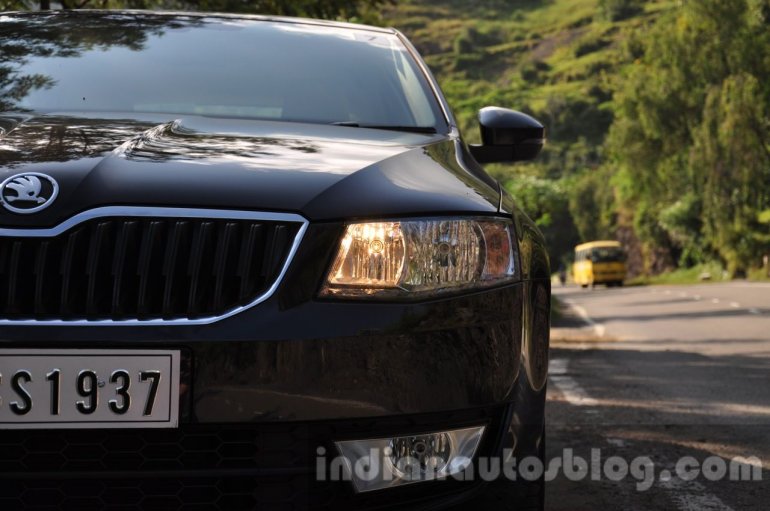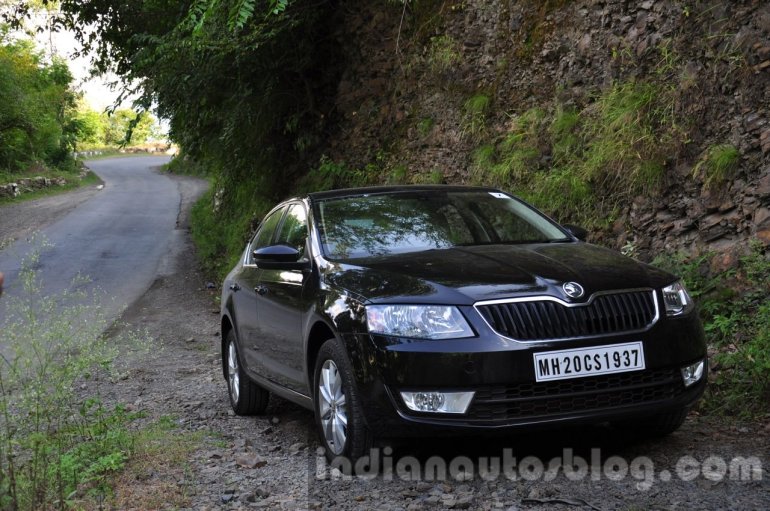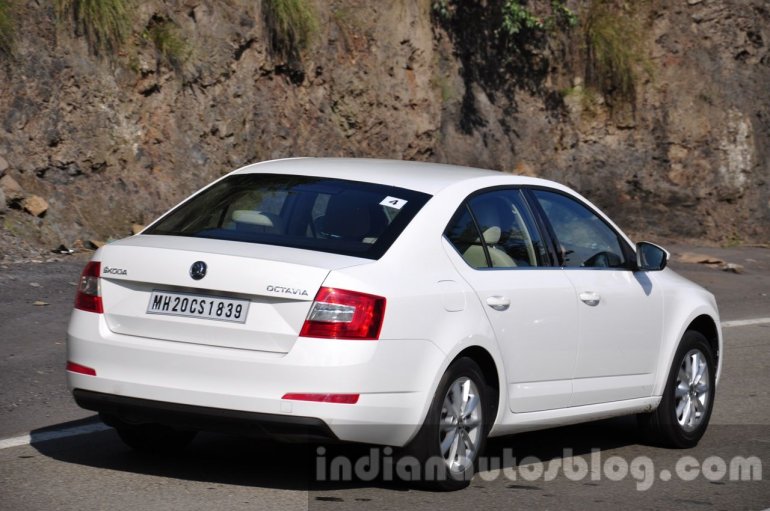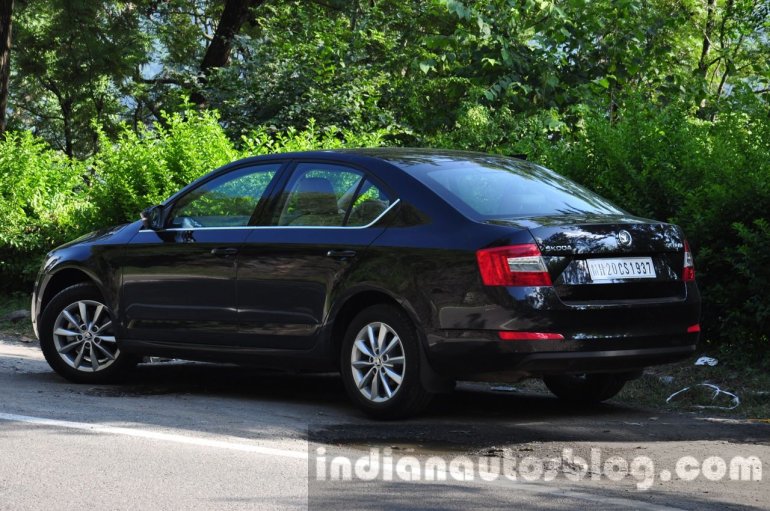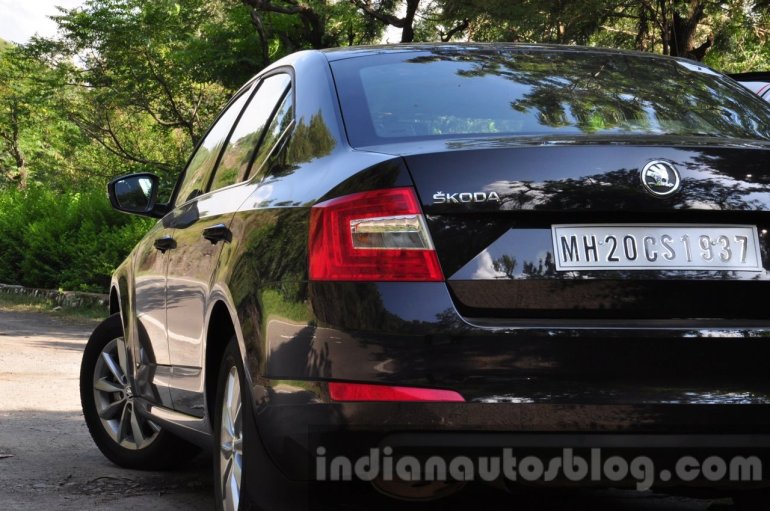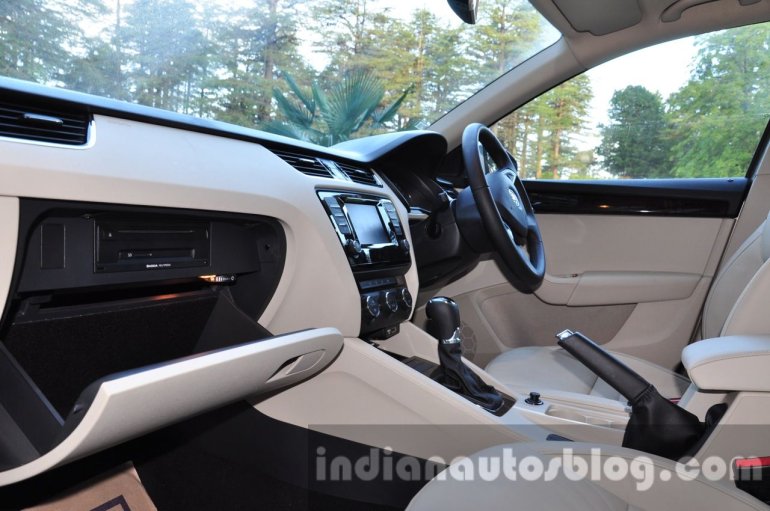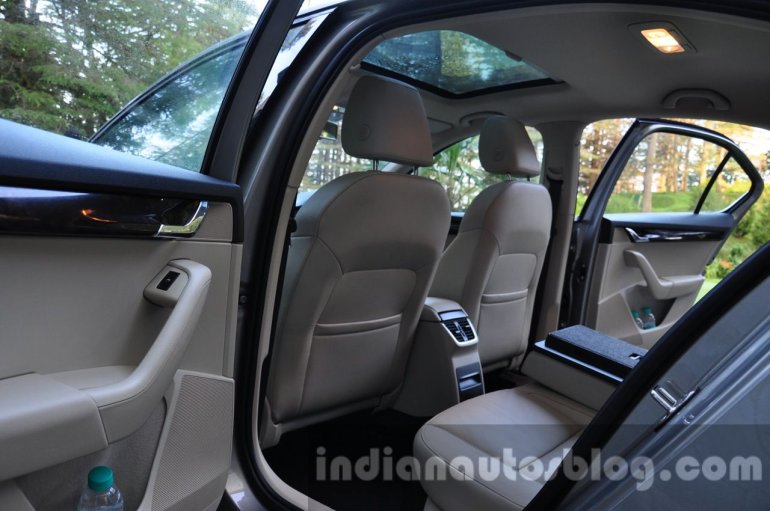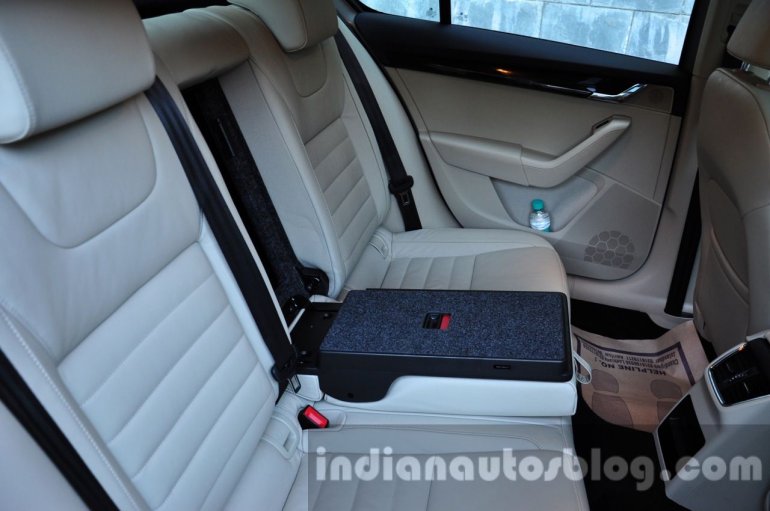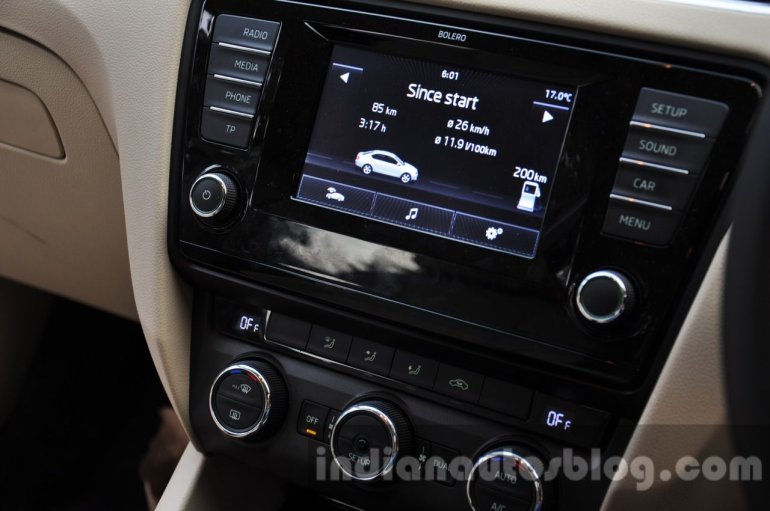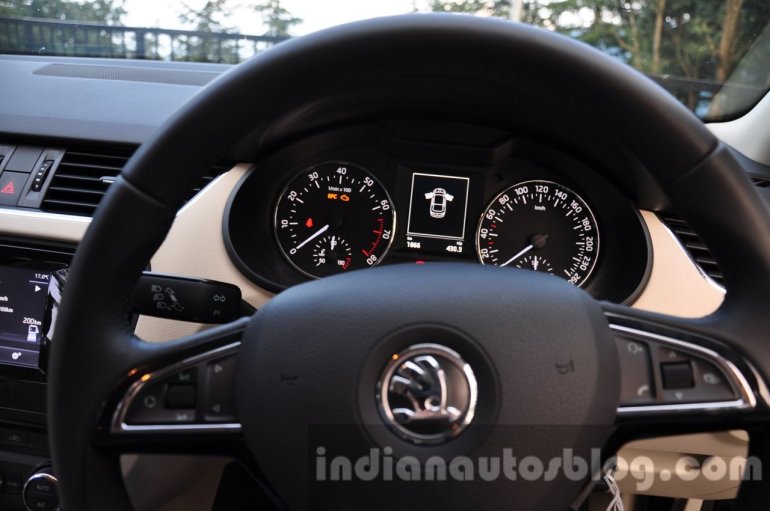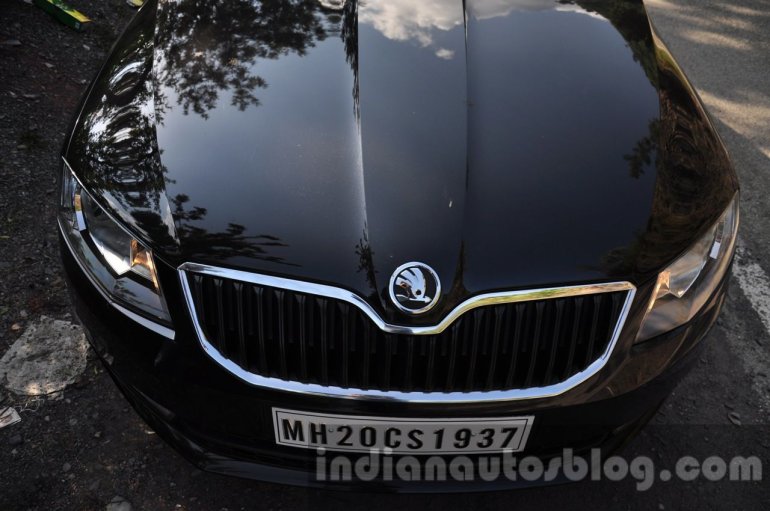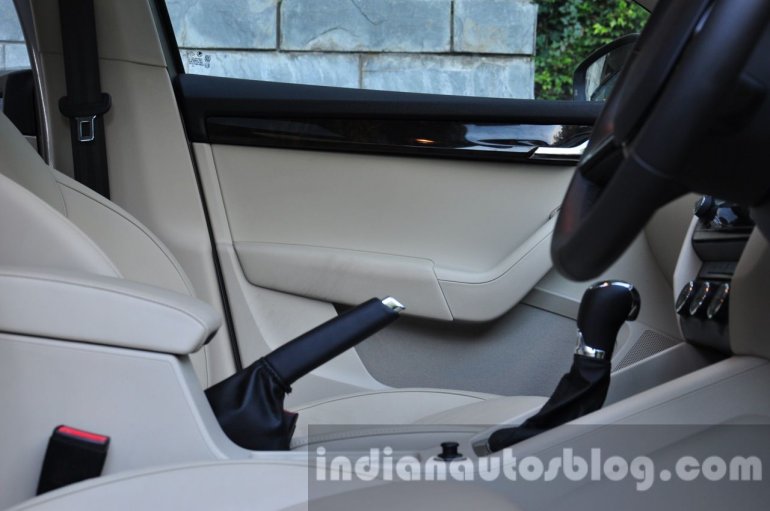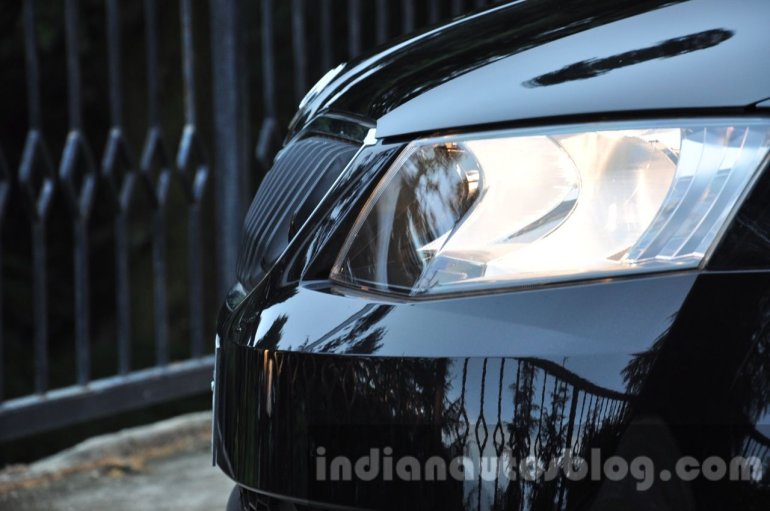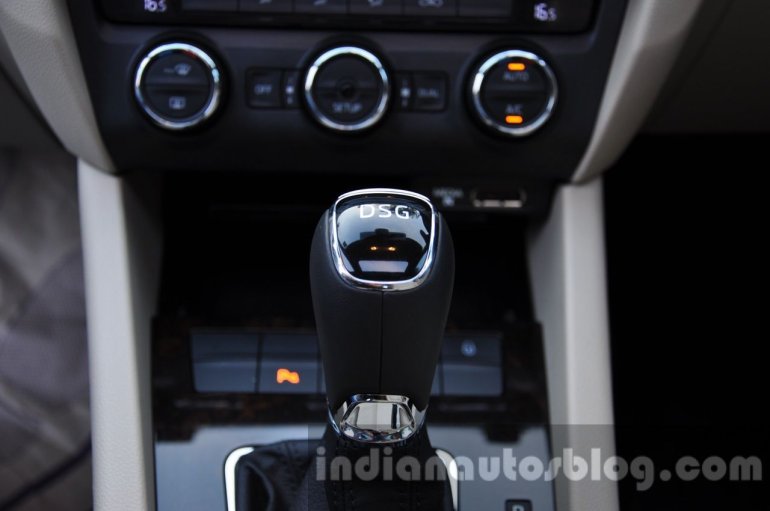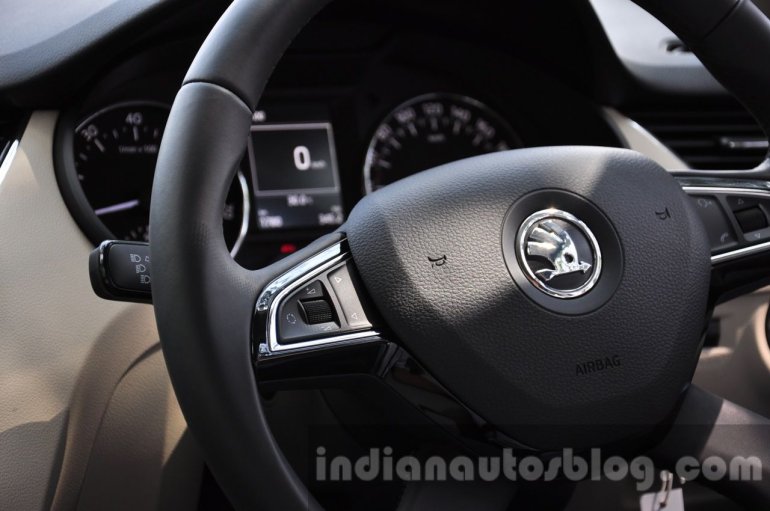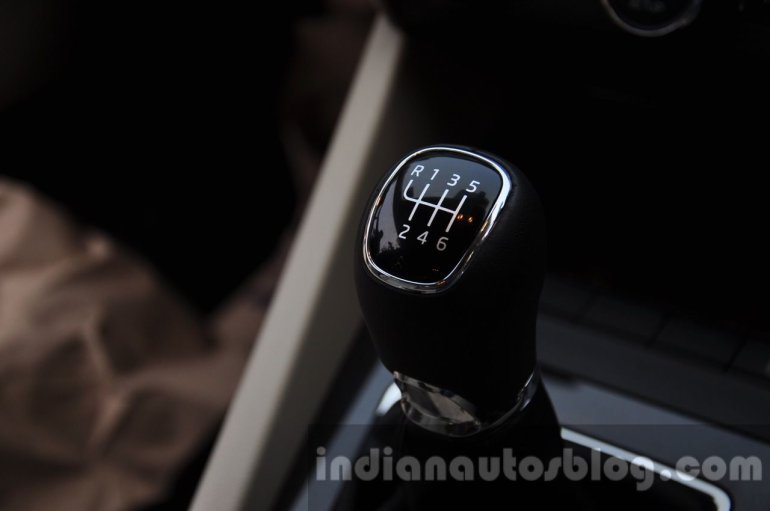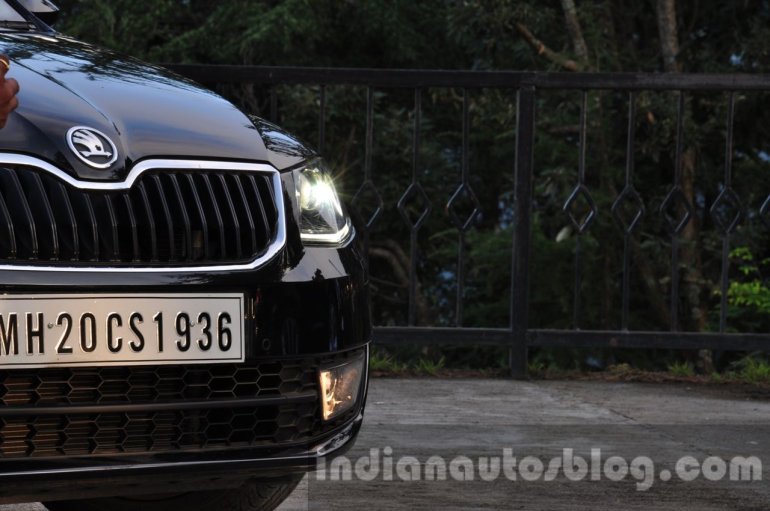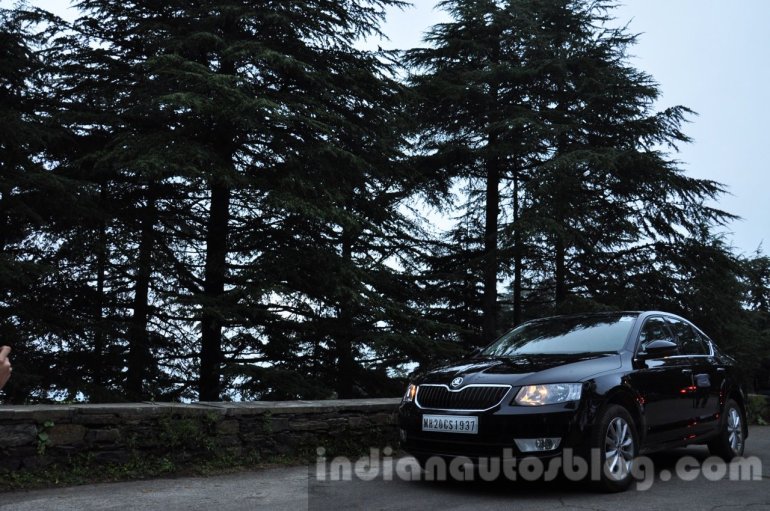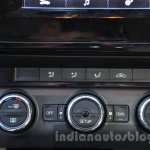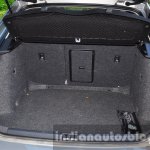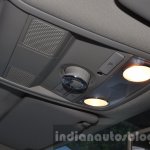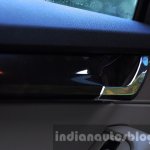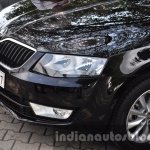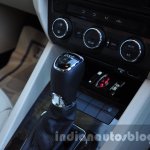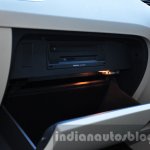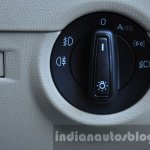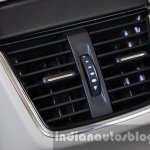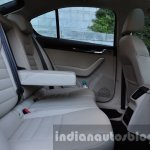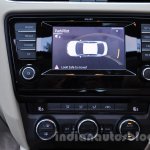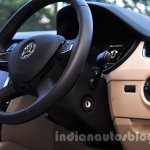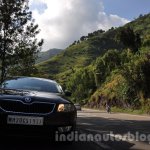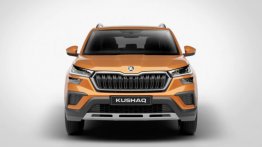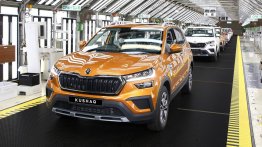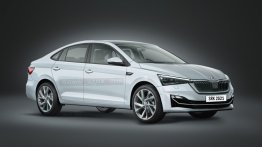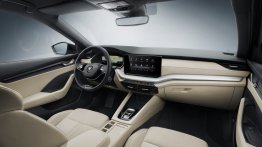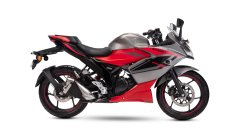IAB wishes to thank Tarun Tripathy who represented us at the Skoda Octavia media drive while the rest of us were working on the updates from the Frankfurt Motor Show!
Skoda, a Czech auto-maker and a Volkswagen Group company, made a marked entry into India almost 13 years ago in 2001 with its global flagship product - the Octavia. That was followed by the likes of the Fabia, Yeti, Laura, Superb, and the recent mid sized sedan - Rapid.
The Octavia was Skoda's reckoning back when it was launched and became quite famous for its solidarity, chiefly amongst the young crowd of a vibrant India. But as the years piled on, the car aged and better competition slowly took it off the market. It was also not helped by the fact that its successor, the Laura, was placed a segment above the original in India.
However, everything will change today when the Octavia brand will reclaim its lost status from the Laura, and go on sale in an all new avatar. We have been driving this very avatar amidst the hills of the Himalayas recently and here's everything you ought to know about it.
When the Octavia officially goes on sale today, it will not only be pit against the likes of Hyundai's Elantra and parent company Volkswagen's Jetta, but will also face off with an ailing automotive industry, which has been going through one of the worst downturns in history.
But that might not be the only challenge Skoda will have on its hands. The Octavia is squarely aimed at the 'D' segment of the Indian automotive sector, a segment that has never really seen big sales figures. In the past, people have chosen to move over the 20 lakh pedestal and past the 'D' segment, to buy Sports Utility Vehicles. But as we were converging on the last few hairpin bends in the Himalayas, we were convinced that the Octavia just might change all that, and also awaken the currently dormant Indian automotive universe.
Design that Matters
The latest iteration of the legendary brand has been completely redesigned and specced from a clean sheet of paper. Skoda has stuck to its classic, sedated, and simplistic design language that has helped the car maker deliver a well defined machine. Neat, clean, and vibrant lines adorn the exterior shell of the Octavia, which are further enhanced by the gorgeous day time running LEDs at the front, and Skoda's signature 'C' shaped tail lights at the rear.
You will however not fail to notice how similar the rear end of the Octavia is to it's younger sibling from two segments below, the Rapid. But that's about all there is between the two. If the Rapid-like rear displeases you, the impressively detailed smoked frontal headlamps more than make up for that. The front end is quite cunningly Instagram-atic, and the billion dollar app is sure to love it.
Importantly, we believe the Octavia will age slower thanks to its simplistic design language and, therefore, will stay in the market longer before an update or a refresh is required. In the past, simple and clean designs have outlasted the radical ones. The classic example of the original i20 and the original Polo is testimony to that fact. While the i20's design has undergone refreshes since launch, the Polo's simpler design language has lived on actively.
Dimensionally, the Octavia is bigger on all fronts than the car it is replacing, and that's good news for the taller population of the back seat. More legroom, headroom, and width make the Octavia's cabin a much better place to be in than the Laura's. Despite being quite a sizeable sedan with definitive road presence, its driving dynamics make you believe you are driving something way smaller and more compact. More on that soon.
On a different note, the Octavia also happens to be the first car in the world to be underpinned by Volkswagen's MQB architecture. It's short for a platform design that Volkswagen group companies will adopt over the next 12 years for most of their cars. How will this benefit you? Well, Volkswagen has a lot of companies under its fold, right from Skoda to Porsche, each having their own chassis design architecture for their respective product lines. On a fortunate morning, Volkswagen realized that by drawing out a standard construction architecture for its various brands, it would be able to reduce production costs, developmental costs, and improve overall efficiency.
Ultimately, to the buyer, this would mean cheaper vehicles, faster availability of parts, and better over all service quality. And to Volkswagen, this would mean bigger sales figures en route to the No.1 spot it has been vying for a long time.
On the Inside
Everything on the inside of the Octavia has been put together with excruciating amounts of attention to detail and quality. Whether it is the rich beige leather on the seats or the plastic on the dash or the buttons on the steering, every element has been given a lot of thought and even more action.
The dashboard, the single most important piece of real estate inside a car, is dual tone (black & beige) and gets parts from the bin at Skoda marked - the really good stuff. You will be hard pressed to find a button anywhere in the cabin that's not done up well. Rotary knobs are knurled and even the bonnet release lever in the driver foot-well has been thoughtfully crafted. The front seats are impressively designed and the driver's side also gets 12 way power adjustments with seat memory for 3 configurations. Numerous storage spaces and cup holders adorn the cabin while the rear also gets an air conditioning vent of its own.
What you will subconsciously note is how the entire cabin design has been centred around the infotainment system. The 5.8-inch touchscreen system not only takes care of your entertainment options but also controls a lot many sub systems of the car. It takes care of the Multi Function Display (MFD) in the driver's instrument panel, displays numerous driving data, holds settings for various onboard equipment such as the lights, vehicle service reminders, mirrors, parking, TPMS (Tire Pressure Monitoring System), and the ESC (Electronic Stability Program). It can connect and download your phone data via Bluetooth while supporting inputs from USB drives, memory cards, auxiliary cables, and CDs.
The CD drive, quite possibly the least used feature on a car, has been smartly placed in the glove compartment, which by the way is also cooled (through a separate rotatory switch control). The cabin gets 8 speakers across all variants and their output is pretty good. The steering wheel is wrapped in leather and has controls for music, bluetooth, phone, and the MFD mentioned earlier.
The thoughtfulness of the cabin design is further witnessed in the presence of an LED light in a small rubberised space below the air conditioning controls that is best fit for placing your phones, no matter what size they are. Inspired by the very same phones, the infotainment system also incorporates a proximity sensor that reacts to an approaching hand by brightening the touchscreen and bringing up the primary controls. It's kind of a gimmicky addition, but thoughtful nonetheless.
Depending on the variant you choose, you will get automated dimming internal and external mirrors, a panoramic sunroof, automated wipers, automated headlights, six airbags, day time running lights, cruise control, and more. You can even get your key fob to do things such as closing the windows, setting your seat positions, and controlling the exterior mirrors. You can find a feature by variant list at the end of this article. It's quite exhaustive and very impressive. Clearly, a lot of electronic wizardry has gone into designing the interiors and equipping them substantially.
Driving Arsenal: Great Power, Multitude of Responsibilities
The Octavia will come with the following engine - transmission - power - torque - variant options:
(Variant Classification: Active - Base; Ambition - Middle; Elegance - Top End)
- 1.4 TSI Turbo Petrol - 6 Speed Manual - 138 BHP - 250 NM (1500-3500) - Active + Ambition
- 1.8 TSI Turbo Petrol - 7 Speed Twin Clutch DSG Tiptronic - 178 BHP - 250 NM (1250-5000) - Elegance
- 2.0 TDI Turbo Diesel - 6 Speed Manual - 141 BHP - 320 (1750-3000) - Active + Ambition
- 2.0 TDI Turbo Diesel - 6 Speed Twin Clutch DSG Tiptronic - 141 BHP - 320 (1750-3000) - Ambition + Elegance
You have already seen the 1.4 TSI, 1.8 TSI, and the 2.0 TDI in action under the hoods of the Volkswagen Jetta, Skoda Superb, and the now discontinued Skoda Laura. If you have driven either of them earlier or owned one, do note that Skoda has pumped up power and performance in both these motors and the resultant drive is pretty damn exciting in the Octavia 2013.
But, it isn't just the motors under the hood that contribute to the Octavia's drive characteristics. The car packs some serious amount of technology and we are going to attempt to give you a short brief on them because they are important.
The Octavia comes equipped with ABS, EBD, HBA, ASR, MSR, EDL, ESC, MKB, Pre-fill, and TPMS. All of these, function with the help of a mountain of sensors and actuators spread across the car, and here's the background on them.
The Antilock Braking System (ABS) helps you to stay in control of your car in panic braking situations by applying and releasing brake pressure 15-30 times a second. Electronic Brake-force Distribution, an aid to the ABS, calculates the weight acting upon each wheel instant by instant and distributes brake force accordingly.
The Hydraulic Brake Assist (HBA) pushes brake force to the maximum level automatically if it detects high speed hard braking. The Anti Slip Regulation (ASR) + Motor Speed Regulation (MSR) does not allow loss of power or control, by varying torque levels at the driving wheels. The Electronic Differential Lock (EDL) allows for smooth starts on hills or slippery surfaces where there are chances of the wheel slipping/spinning. It reduces/stops power delivery to the spinning wheel and directs it to the wheel with more traction.
The Electronic Stability Control (ESC) works with the help of numerous sensors in detecting loss of control, and regulates power + braking to direct the car in the direction the driver intends to take it. The Multi Collision Braking (MCB) system automatically brakes the car to a halt if it detects a collision in order to avoid another.
The Pre-fill (Hydraulic Braking System Readiness) pressurizes the braking system a few moments before the driver hits the brake pedal if it detects a hazardous situation is about to occur. The Tire Pressure Monitoring System (TPMS) works constantly to monitor tire conditions and sets out warnings if the tire punctures or is running on low pressure. On the Octavia, none of the above systems can be switched off except the ESC, which can be turned off through the central infotainment system.
Going under the car, the suspension on the front axle is independent and includes McPherson struts and torsion stabilisers across the range. The suspension on the rear is dependent for the 1.4 TSI and 2.0 TDI variants, comprising of a compound link crank axle set up. The 1.8 TSI on the other hand, gets an independent configuration at the rear also, consisting of a multi link set up with torsion stabilisers.
The car gets all round disc brakes with the front ones internally cooled as well. 16-inch wheels are standard across the range while the Good Year tires boast a profile of 205/55.
Behind the Wheel
When a platoon of engineers sit down to design a new car from scratch, they start at the small rectangular contact patch the tires make with the tarmac. Those four contact patches are responsible for how a car drives, how a car looks, how a car feels, how safe it is, how reliable it is, how comfortable it is, and more. These engineers design the car starting from bottom and going upwards. That's the way it has always been done in history and one of the primary reasons why a lot of iconic cars have been, well - iconic.
The Skoda design and engineering team have worked hard on delivering a car that is bigger, lighter, more powerful, oozing with technology, and far more efficient than the original Octavia. They have of course, designed the car starting at the tires and delivered quite an exciting motoring machine.
Exceptional amounts of grip will come as standard across the range of the Octavia. No matter how much you push the car around devious and even more devious corners, the dynamic set up and technology on board the car keeps every bit of the car in complete control. There is virtually no roll and the car doesn't take much time to plant a smile on your face as you hit apex after apex.
The crisp electro-mechanic steering is well tuned to give you just enough feedback from the road and inspire confidence at the high speeds the Octavia can attain very quickly. The suspension is independent on the front and dependent on the rear for all versions except the 1.8 TSI, which will have an all independent set up and will be the most powerful Octavia money can buy in India. Skoda is of course pitching this version as a performance sedan and will price it accordingly as well. Don't expect to see many of them on the roads because, 1. You are probably not an Arabian Oil Baron. and 2. The 1.4 Petrol and 2.0 Diesel are no scrooges. They are supremely fun too!
Coming to the transmission, the 6-speed manual is smooth, requires short throws, and is the most fun to drive, whether it is on the diesel or the petrol. There is a lot of torque and power available from the engines, and this gearbox lets you play around with that power comfortably. Further to that are present 6 and 7-speed twin clutch DSG transmissions.
Twin clutch gearboxes were introduced in super-cars not too long ago, and surprisingly they have made their way into regular road cars pretty quickly. What these gearboxes do is essentially operate a gear using one of the clutches in the car while the other clutch is ready with the next + or - gear depending on whether you downshift or upshift. This allows for higher efficiency and faster gear changes because the clutch is not wasting time in disconnecting one gear and moving to the next one. On-board computers control operations of both the clutches.
Both the DSG boxes on the Octavia work well with virtually no mechanical feedback during gear changes. Although, they are a bit hesitant (fractional seconds) to downshift during over taking manoeuvres. And if you are one of those who came across the news of failing DSG boxes in India, Skoda has assured us the issue has been rectified and the Octavia's DSG units will be 100% operational.
And finally, the engines.
They are all turbo charged. They are all free revving. They are all pure entertainment.
The 1.4 TSI wakes up around the 2500 RPM mark and pulls cleanly to the red line. The 2.0 diesel pulls from around the 2200 RPM mark. And the 1.8 TSI doesn't bother where you are on the rev counter. It simply goes - straight and simple. On the manual 6 speed boxes, there is some work required to keep the engines in the power band. Go below the 2500 and 2200 mark in the 1.4 petrol and 2.0 diesel respectively, and you will find Marutis' explaining the Doppler Effect to you.
As long as you keep these motors revving over these base limits, you will not have a problem beating anything on the road. Even the base 1.4 petrol is supremely fun to drive. A big reason for that is the insane amounts of torque (250 NM) the motor delivers, which is surprising for a 1.4 litre engine. We kept it in 2nd gear constantly as we belted across the valley around Shimla and it delivered uncompromising sinful joy. The mileage took a hit though hovering around the 7 km/l mark. But it evened out as we shifted up to civilization. We did not get to drive the 1.8 TSI, but with a performance minded suspension set up, a 7-speed twin clutch box, 178 BHP on tap, and feedback from the ones who did drive it; we were convinced it was a serious performance sedan.
The tone of the 1.4 TSI and 2.0 TDI is not particularly exciting though. Both these motors lack the pleasing sound of a free revving engine. However, the 1.8 TSI changes all that with a crisp and delightful note. But you wouldn't be bothered by any of it thanks to a well-insulated cabin.
Side Notes: The Elephants in the Room
The Octavia does have a few shortcomings.
1. You will notice how during the interior description we steered clear of the rear seat comfort. It's not exactly the best piece of real estate within the Octavia. It's designed well, looks rather inviting, but when you get there finally, you are left wanting for more. The rear seats lack under thigh support and any commute longer than the shopping mall can get uncomfortable at the rear.
2. We found the halogen lamps available on the Active and Ambition trim to be inadequate in light intensity and projection. We really wanted the bi-xenon lamps with daytime LEDs (present on the Elegance variant) to be standard across the range. But they are not, and Skoda should really look at the option of standardisation in the future. The bi-xenon DRLs are what give the Octavia it's ultimate design characteristic and will be a big reason why the fashion inspired population of the country will buy the Octavia.
3. When Skoda puts the Octavia on the Indian market in October, the people who will pick it up will have a challenging time putting it into tight parking spaces. In a world now majorly dominated with reverse cameras (thanks to the likes of Hyundai and Toyota), the Octavia will arrive with parking sensors alone. Here is where we believe Skoda missed a trick somehow in an otherwise well accomplished car. The Octavia already has a constrained rearward vision (narrow window profile), and cameras would have made a big positive difference.
Verdict
The Octavia's success in India will of course boil down to how well it is priced. We are suspecting the 1.4 TSI Ambition to cost 13.5 lakh and the 2.0 TDI Auto Elegance to cost close to 15 lakh, both ex-showroom Mumbai. The 1.8 TSI will be priced considerably higher. But which one should you buy? Off the 3 available variants, the base Active variant will arrive with either the 1.4 TSI motor or the 2.0 TDI Manual motor under the hood. Once you have gone thorough the variant by feature list, you will notice the Active variant to be quite basic and missing most of the exciting features we have spoken about. It in fact even misses out on the central infotainment system and comes with a standard Skoda unit.
The most popular motor will without doubt be the 2.0 litre diesel. The middle Ambition variant should rake in the largest sales numbers since it has all the essential features we have been speaking about and misses out on just a few of them to the top end Elegance including: bi-xenon headlamps, headlight washers, daytime running LEDs, cornering headlights, TPMS, front parking sensors, side & curtain airbags, cruise control, panoramic sunroof, electric driver seats, and programmable external mirrors. While we absolutely loved the panoramic sunroof, the absence of none of these features (except perhaps the extra airbags) will hurt performance and safety in the Octavia. Our pick would be the 2.0 TDI Ambition 6 Speed DSG Auto.
To conclude, if you have been looking to get on board the D-segment of the Indian automotive industry, there is no reason why you shouldn't consider the Octavia. It is well rounded and comprehensively better than the competition it is up against. It not only outperforms them in most spheres, it out classes them too. As we mentioned earlier, Skoda has really thought this through. The launch of the Octavia, if priced accurately, will send Hyundai back to the drawing board with the Elantra, and once again establish the Octavia brand as a formidable force to reckon with in the Indian market space.
